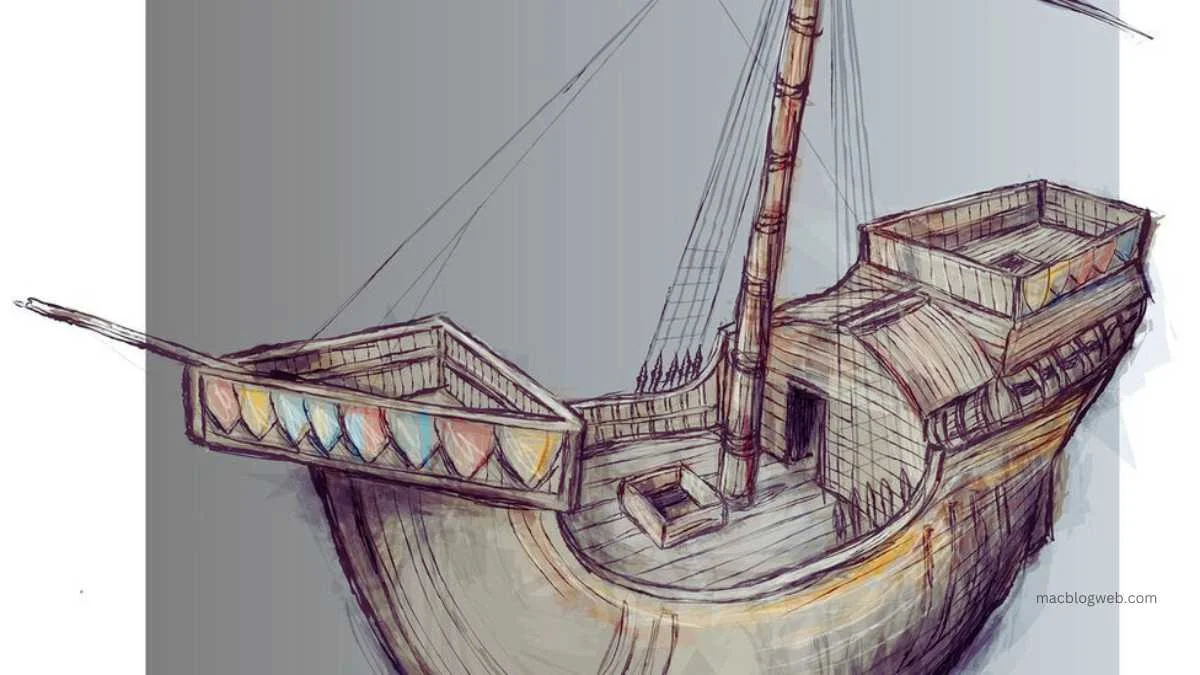The Holigost, often referred to as Holy Ghost, is a significant relic of England’s medieval maritime history. As one of the four “great ships” commissioned by King Henry V, its story intertwines with the narrative of naval warfare, technological advancements, and historical archaeology. Originally a Castilian vessel known as the Santa Clara, the ship was captured around 1413-1414 and subsequently integrated into the English navy. This detailed exploration delves into the transformation, service, and eventual fate of the Holigost, shedding light on its importance during the Hundred Years’ War and its legacy in the present day.
Origins and Acquisition
The Holigost originally sailed as the Santa Clara, a carrack from Castile. It was captured by the English during a time of intense maritime conflict between England and its European rivals. Like many captured vessels, the Santa Clara was refitted for the English navy, undergoing extensive modifications to suit the needs of Henry V’s fleet.
Reconstruction and Role in the English Navy
After its capture, the Santa Clara was transformed into the Holigost and became an integral part of Henry V’s ambitious naval expansion. This initiative aimed to strengthen England’s naval capabilities amid ongoing conflicts, particularly the Hundred Years’ War. The ship was officially added to the royal fleet on November 17, 1415, shortly after the famous Battle of Agincourt. Measuring over 98 feet in length and 39 feet in beam, the Holigost was a formidable vessel, boasting a displacement of 760 tons according to the Builder’s Old Measurement.
The ship was manned by approximately 200 sailors and had the capacity to carry up to 260 troops. Its armament included seven cannons, 102 gads (iron spears), and various handheld weapons such as bows, arrows, spears, and poleaxes. These features made the Holigost a critical asset in naval engagements, providing substantial firepower and troop support during operations.
Naval Engagements and Repairs
The Holigost saw action in several key naval battles during the Hundred Years’ War. Notably, it participated in a naval battle off Harfleur in 1416, where it sustained damage that necessitated extensive repairs. Following these repairs, the ship engaged in another significant battle off Saint-Denis-Chef-de-Cove in 1417. These engagements highlighted the strategic importance of naval power in medieval warfare and demonstrated the capabilities of ships like the Holigost in securing control over vital maritime routes.
Withdrawal and Final Years
The ship’s active service ended in 1422, coinciding with the death of Henry V. Subsequently, the Holigost was laid up in the River Hamble in Southamptonshire. In 1423, repairs were undertaken by Davy Owen, marking what may be the earliest recorded use of a diver in ship repair in England. However, the lack of ongoing maintenance led to the vessel’s eventual sinking at its moorings. The exact circumstances of its sinking remain unclear, but it is likely that the ship slowly deteriorated until it was no longer seaworthy.
Archaeological Significance and Preservation
The wreck of the Holigost is believed to have been discovered near the wreck of another of Henry V’s great ships, the Grace Dieu, in the River Hamble, Hampshire. This site is now a Protected Wreck managed by Historic England, underscoring its importance as a cultural and historical artifact. The protection of the site allows for archaeological studies that contribute to our understanding of medieval shipbuilding techniques, naval warfare, and the maritime history of England.
Conclusion: the holigost
The Holigost serves as a fascinating case study in medieval naval history, from its origins as a Castilian vessel to its role in the English navy under King Henry V. Its story offers insights into the tactical and strategic use of naval power during the Hundred Years’ War and the technological advancements of the period. Today, the preservation of its wreck allows historians and archaeologists to continue exploring the rich tapestry of England’s naval heritage, providing a tangible link to the past and its maritime endeavors.








